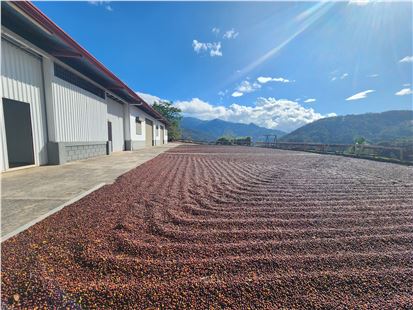BENNETTS ORIGIN REPORT

Find out the latest news from Origin!
Project One at CoopeDota While our visits to Costa Rica are always a rewarding and uplifting experience, this particular trip coincided with one of the most unexpected weather events the country has ever faced. Unseasonal and unprecedented rainfall began in October 2024—right at the start of the harvest—and, as we witnessed firsthand during our February visit, was still lingering (albeit easing slightly) several months later, with the harvest estimated to be between 50% and 90% complete. |





